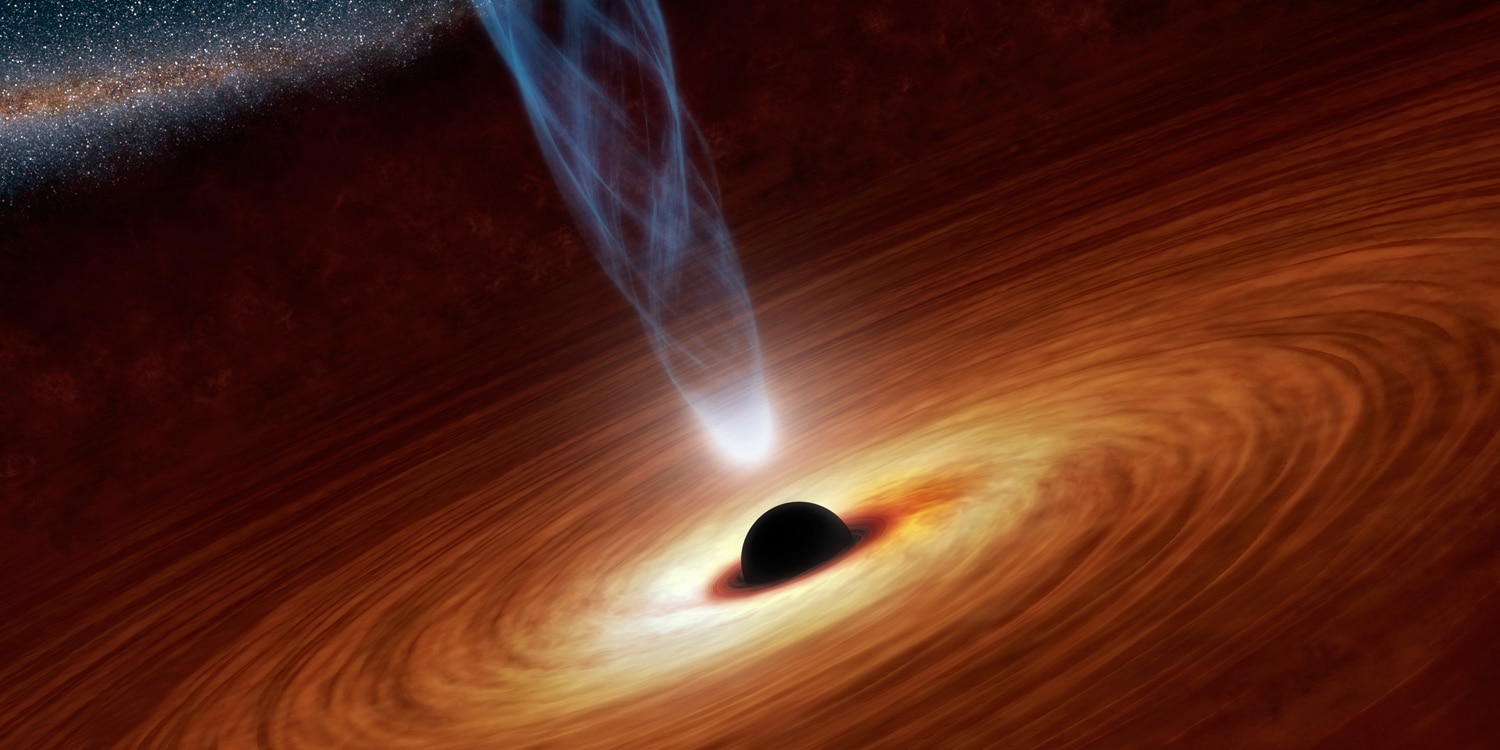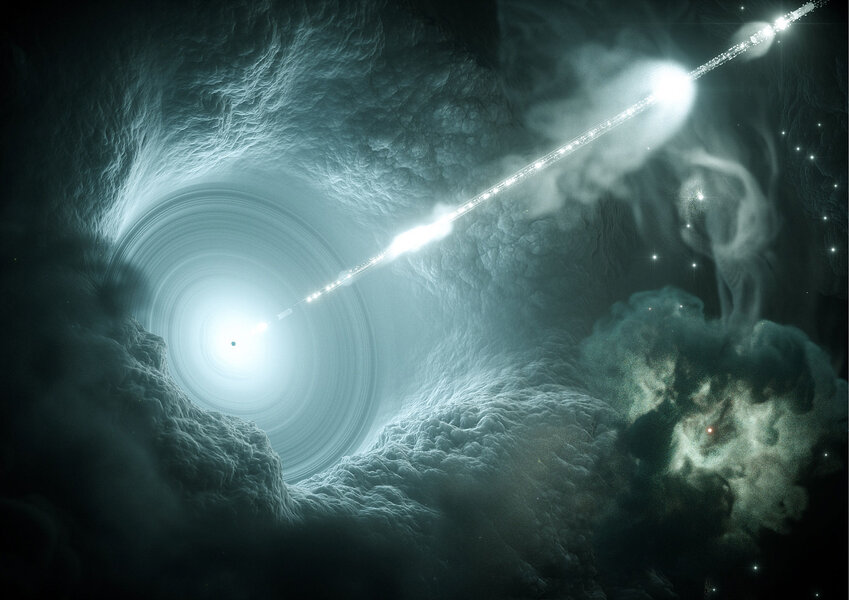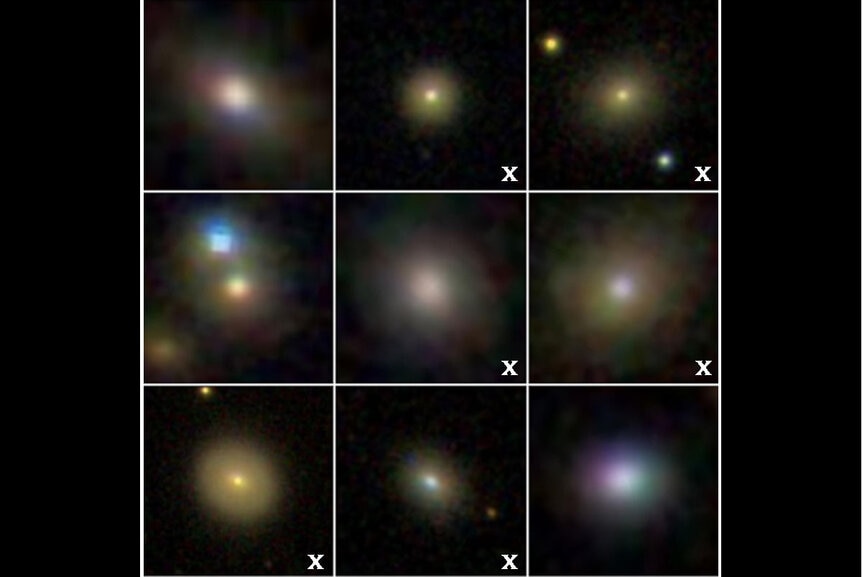Create a free profile to get unlimited access to exclusive videos, sweepstakes, and more!
In dwarf galaxies, a black hole wind is rising

Whenever I write about supermassive black holes, I am always careful to say that we think they are in the centers of every big galaxy. That's because when we survey the centers of galaxies that are big, like our Milky Way, we tend to see evidence of them.
But what about little galaxies? I don’t want to be massist here, so it’s only fair to look at what we call dwarf galaxies, ones with a mass in stars of less than about 10 billion times that of the Sun (for comparison, the combined mass of stars in the Milky Way is more like 200 billion times the Sun). The evidence for supermassive black holes in them is a bit tougher to discern. However, I recently wrote about a study that not only found 13 dwarf galaxies with supermassive black holes in them, but these black holes were also actively feeding.
That's important! When matter falls into a black hole, it generally has a little bit of angular momentum; that is, it doesn't fall straight in but instead scoots to the side a little bit, creating a vortex like water going down a drain. If the matter stream is thick enough, the material piles up in a disk just outside the black holes Point of No Return. Friction becomes a very important force, heating that material up sometimes to millions of degrees. Matter at that temperature glows fiercely, and the disk can be so bright it outshines the rest of the light from the galaxy combined. We call these active galaxies.
The reason this is important is that the light from an active galaxy's disk can be so intensely bright that it can actively blow material away from the galactic center. That gas is what makes stars in the galaxy, so the central black hole, which is tiny on the scale of a galaxy, can actually control how rapidly stars form in the galaxy. The wind that blows out from the center can compress gas around it, which makes stars form more easily… but if the wind is very intense it can blow that material clear out of the galaxy.
When that happens, star formation is quenched. We see fewer stars being born in galaxies like that.
Dwarf galaxies, by definition, have a lot less mass than big ones. That means they have less gravity, so they can't hold on to gas as well. That means that for a given black hole, dwarf galaxies might have more trouble forming stars than big ones, because it's easier for the black hole to blow the gas away in the weaker gravity. But is that the case?
A team of astronomers decided to find out. They used the Sloan Digital Sky Survey — a huge survey of the sky — to look for dwarf galaxies that had characteristics of being active, as well as several that didn't they could use for a control group. They worked with 50 in total (29 active and 21 control), and used the huge Keck telescope in Hawaii to take spectra of the galaxies, to look for indications that the active galaxies were blowing winds.
They found 13 galaxies blowing winds. Of these, four had winds that were more consistent with them being blown by massive stars, which are very luminous and can generate outflows of gas from a galaxy. Of the remaining 9, two had winds that looked like a mix of massive stars and black hole winds, and one couldn't be identified clearly.
That left 6 dwarf galaxies with winds powered by their central black holes. These winds are blowing: The flow speed is several hundred kilometers per second, fast enough to get from the Earth to the Moon in just a few minutes. In each case, the wind speed was enough to blow the gas clear out of the galaxy, and in fact fast enough that the gas would never return. In those galaxies, that gas is gone.
That should mean that in those galaxies, star formation should be suppressed; the gas needed to make them is blown away. And that's in fact what they found: The galaxies with these fast black hole winds tend to be redder. A galaxy that is actively making stars tends to be blue, since the most massive stars are blue. But they don't live long. Shut off star formation and in a few million years all the blue stars are gone, exploded, leaving redder ones behind.
This means that they have found evidence that black holes in dwarf galaxies not only affect star formation, on the whole they appear to suppress it. That’s a big deal! First of all, dwarf galaxies are the most common kind of galaxy in the Universe, so knowing how they behave is important to understanding galaxies as a class. But also, big galaxies like ours in general grow by eating dwarf galaxies, cannibalizing smaller galaxies that get too close. The stars and gas (and the black holes!) in these galaxies are subsumed into the bigger galaxy, so understanding these little ones is critical to understanding our own.
This is a big first step in learning how the feedback mechanism of supermassive black holes in dwarf galaxies quenches star birth. Hopefully more surveys will be done to better nail down the statistics as well as get more detail on the process, including how important this process is compared to, say, stars blowing gas around in these galaxies, too.
They may be small, but dwarf galaxies play a big role in how all galaxies behave in our Universe. And now we understand them a little bit better.
















